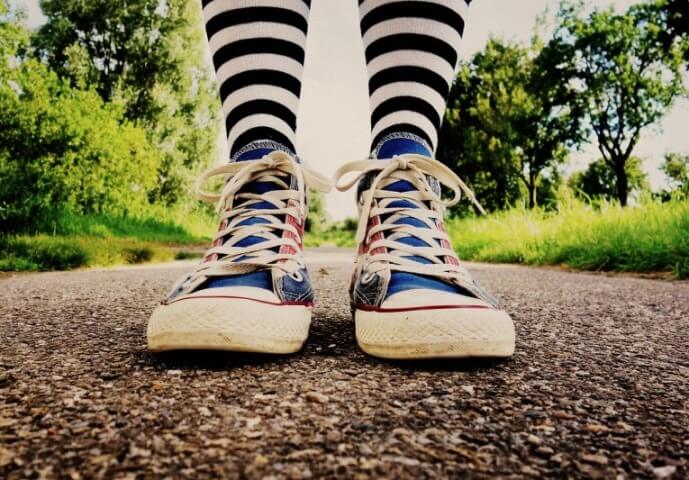How to Solve Being Flat Footed to Increase Foot Comfort
One fifth of adults walks around with flat feet. To have flat feet means you have only a slight arch or no arch present in the middle part of the underside of your foot. This might also include when carrying heavy weights like a backpack or when lifting moving boxes.
In this article, we delve into flat footedness more to determine what issues it creates and what can be done about it.
Table of Contents
Are You Flat Footing It?
The technical term is overpronation, but it’s more commonly referred to as having flat feet. It’s caused when you roll the ankle inwards when walking or standing with the arches of the foot flattening out as a result.
To see if you have a flat foot, you can place a finger underneath where the arch should be and check if it will slide under or not. There should be enough space, but if there isn’t, then that’s a strong indicator of consistent overpronation.
Overpronation comes in two versions:
1. Rigid – No arch when standing up or sitting down. This is known as the truer version. It’s usually caused by an ailment called posterior tibial tendon dysfunction. It can be present in both feet or just one foot. Ultimately, it can bend the foot and may benefit from bracing or physical therapy.
2. Flexible – No arch when standing but the arch returns when sitting or lying down. It can occur in children or adults. It’s usually presents in both feet. Walking becomes more difficult and painful the longer it continues.
Does Flat Feet Change Your Posture?
With a flat-footed problem, it changes your balance considerably.
With one or both feet overpronating, there’s the tendency for the body to naturally lean on one or both sides. Depending on whether it’s a single sided issue or unevenly distributed leaning in from both sides, it can affect stability all the way up the body from there. Just like with a house, if it’s built on a shaky foundation, then bad things will likely result from that.
The knees can take more of the responsibility for maintaining balance. However, this wears on the knee joints and particularly the cartilage, potentially wearing it down before its time. Should this happen, the knee joint can become very painful to bend back and forth. Also, the hips might also become misaligned if the problem is only affecting one foot and not the other.
What Affordable Solutions Are There?
Getting some insoles fitted inside your shoes and trainers for each affected foot helps to redress the balance.
Using inserts from insoles.com, it gently re-creates the missing arch in one or both feet to arch the foot manually. As a result, the balance is restored which avoids an eventual issue with the knees rotating inwards over time and other physical conditions that occur from not treating the issue sooner.
In the event that the body has already been affected by prolonged flat footedness from childhood, then physical therapy might be needed to properly address the imbalances. Following that, insoles will probably still be required to avoid a reoccurrence.
